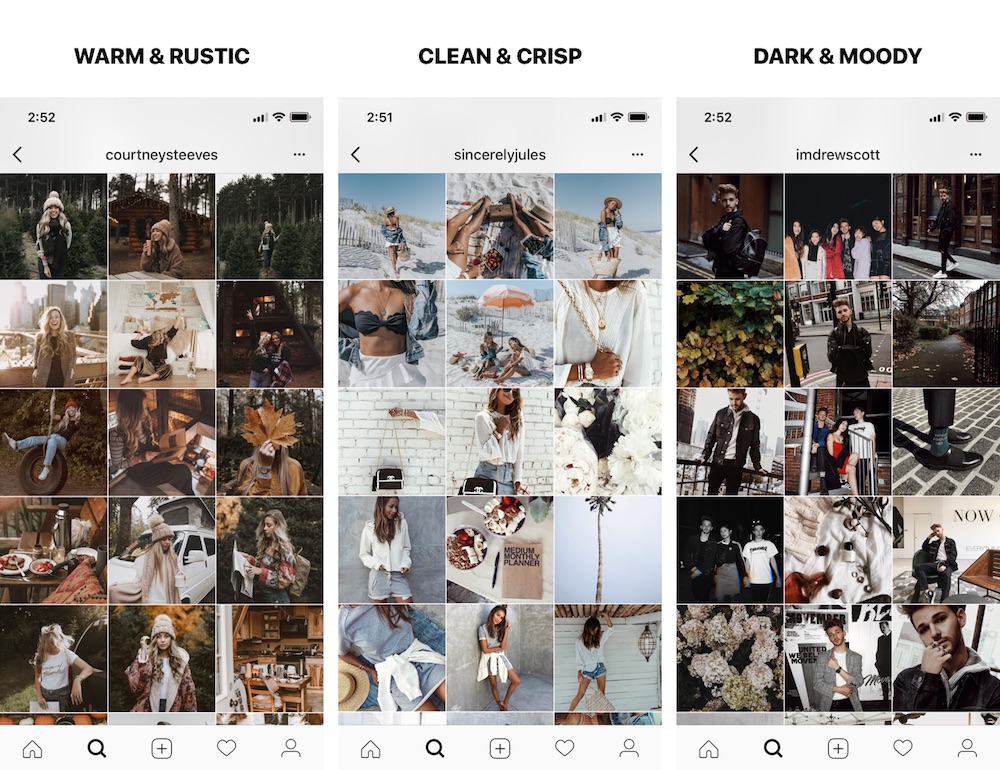Today on the blog we are happy to welcome Instasize for a guest post! Instasize is an incredible app you’ve probably heard of. They specialize in premium photo and video editing tools, photo filters, border packs, trendy fonts and collage creation for influencers, creatives & social media marketing. Check out what they have to say about brand consistency below!
Keeping consistent with a brand presence online is essential for establishing credibility. It improves business outcomes, too—having consistent branding across marketing channels increases revenue by 23%.
Knowing this, and acknowledging social media as likely the most common way prospects discover you online, means that you need to put a lot of thought into social media brand presentation. There are roughly 3.4 billion social media users worldwide, up 9% year-on-year, and most of these users follow and engage with business pages.
Keeping up great social media presence through branding is a must for staying memorable and credible in a sea of other pages. Here’s how to do it.
1. Set your tone
The appeal of social media isn’t just restricted to reach. Social media is valuable because of the potential for two-way, instant communication between brand and customer. For example, in terms of social media customer service, 1 in 3 users prefer concerns to be handled over social media rather than telephone or email, and customers spend 20%-40% more on brands that respond on social as well.
Therefore it’s important to set the tone of your interactions with social media audiences, whether it’s when writing copy for a post or having a one-on-one conversation in direct messages. What kind of image do you want your brand to project?
To answer that, scrutinize demographics like age and location, as well as the industry you operate in. Decide whether to type out more formal or detached messages, or casual, informal ones. Use this as a guideline when adding text to any image or writing copy for posts.
2. Optimize your profiles

Each social media network has its own little quirks. Some profile customization options such as display photo and banner or cover can correspond with each other, while photo dimensions and available bio length may vary.
A simple yet effective way to keep these consistent across your social media is to use the same profile photo and cover each time you change them. You should use your logo for the display image, while you can get more creative with covers. A few ideas:
- A plain photo depicting your brand’s lifestyle
- A typographic or illustrated tagline
- A plain illustration
- Seasonal greetings
- A call-to-action about your marketing campaigns
- News on unique promotions
So when it comes to covers, nearly anything eye-catching goes. Just remember to create different versions in the correct dimensions for each network—and don’t forget the next part.
3. Form an aesthetic
It takes less than a minute and a single glance for someone to form their first impression of your brand. The quality of the visuals you upload to social media acts as a reflection of your brand’s products and services. Form a consistent aesthetic across networks to drive the association between your products and your visual signature.
Start with colors. If you’re working from pre-established guidelines, stick to the various tones set for you. If not, you can use color theory to find the best combinations to build your aesthetic. Here are a few to try:


 (Source: Instasize)
(Source: Instasize)
- Analogous – One of the easiest color schemes to use. Use it if you want your content to feel homogenous or part of a bigger whole.
- Complementary – This creates a high amount of contrast, great for eye-popping visuals that emphasize information that needs to stand out.
- Monochromatic – Using multiple shades of the same color to distinguish fine details, this can be tricky to use, but can look compelling when designed well.
4. Curate the right content
A common social media practice in the past was dividing posts according to an 80% curated content to 20% self-promotional material ratio. The reasoning behind this was to avoid seeming too sales-like, as users preferred less obvious marketing. However, this approach is now outdated—users now welcome more authentic branded content.
Because of this, you need to discern the curated content you allow yourself to share on social media. User-generated content is great for showcasing real customers and advocates, but you still need to choose carefully. Is their content appropriate for showcasing in public? Do the photos they post fit your visual standards? Consider those two questions before rushing to repost.
Final Thoughts
Being consistent on social media shouldn’t be a struggle. Create a set of branding guidelines specifically for use on social media to have handy when creating content. This should at least contain:
- Brand mission and vision
- Tone examples for copy
- Brand colors
- Logo variations
- Typography
Once you have this document, don’t be afraid to consult it for help every once in a while. Once you’ve started fixing up your profiles, take another cursory look. Would your audience recognize them all being from the same business? If you can confidently say “yes,” you’re on the right track.

